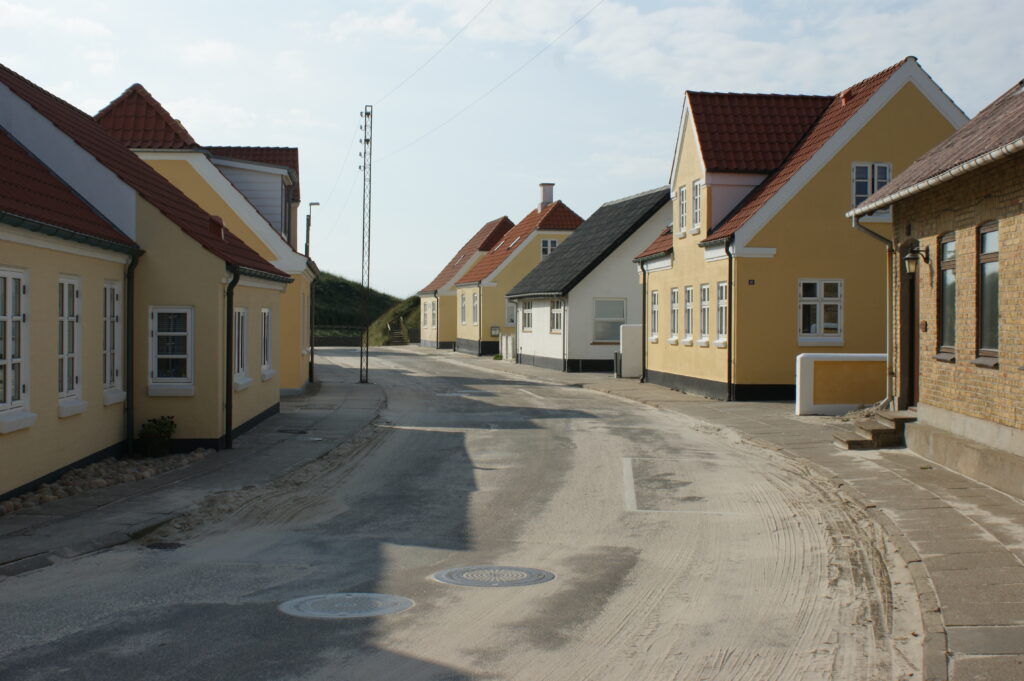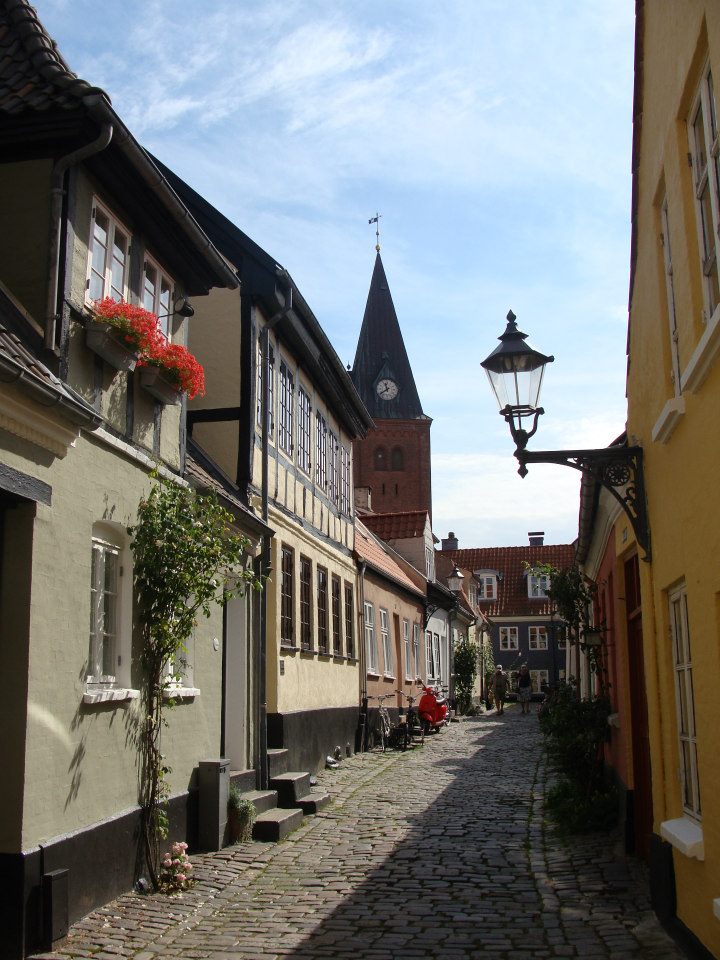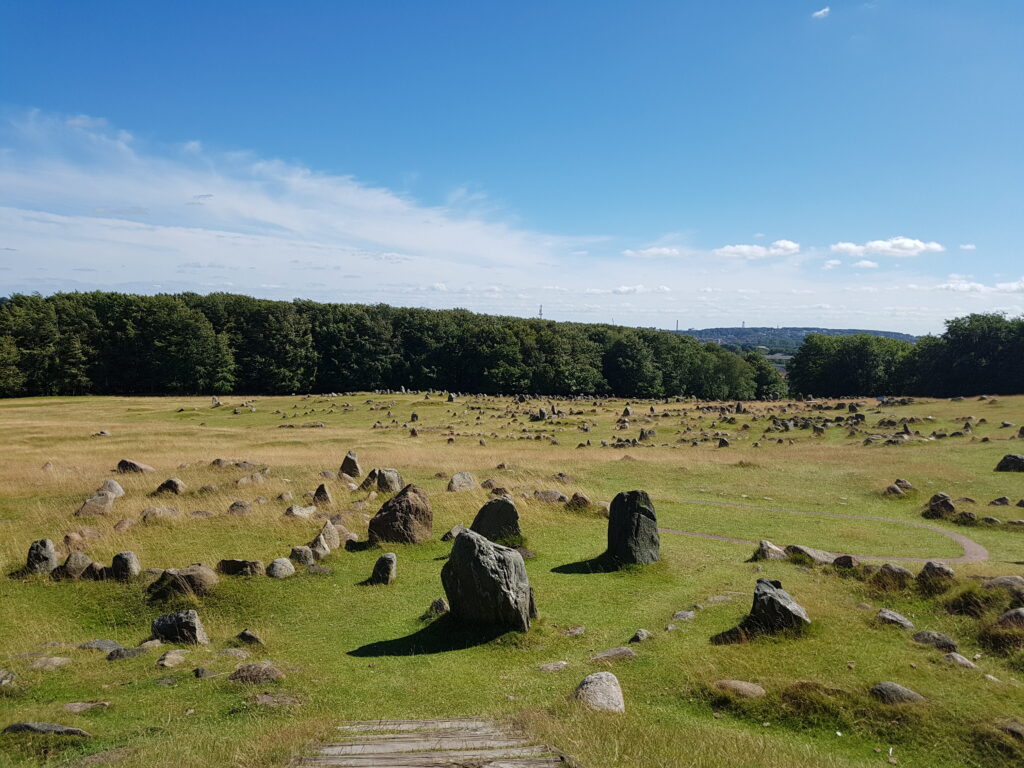Tour of North-Jutland
Løkken
Løkken is a former fishing village, which nowadays mainly lives from tourism. The village is very cozy. You can find many nice shops and especially the sweet shop is worth a visit, because demonstrations take place here of how the candies and candy canes are made by hand.
The coast of Denmark closes off at Løkken at about 0.5m per year. Løkken is protected by a breakwater, but to the north of this town people can calculate how long their house will remain. In contrast to most other coastal towns, the house price here decreases towards the coast. There are a number of bunkers on the beach at Løkken. These bunkers were built in the dunes during WWII, but have since disappeared into the sea.

Norre Lyngby
The town of Norre Lyngby is located just north of Løkken. This town is not protected by a breakwater, as is the case with Løkken. It is therefore clear that several houses here are threatened by the sea. It is nice to take a walk on the beach here and to be amazed at the fact that in Denmark there is no national policy and protection against water, as we are used to here in the Netherlands.

Rubjerg Knude Fyr
Rubjerg Knude Fyr is a lighthouse that stands on the cliff dune Lønstrup Klint. This dune was created because the coast turns off on this side of Denmark. This means that a lot of sand is available, which is blown to the coast by the strong wind. The wind is reinforced by the cliff coast and this allows the sand to be blown extra high. The dune is therefore more than 60m above sea level.
The lighthouse was built in 1899 and was used as a lighthouse until 1968. Until 2002 there was a museum, a restaurant and a large parking lot at the lighthouse. However, these buildings have now been demolished because they were endangered by the sea. The expectation was that the lighthouse will only be there until the end of 2025, but last winter a lot of sand was washed away from the coast and you will probably only be able to climb the lighthouse in 2018, so if you still want the lighthouse on this immense dune you have to be quick!

Råbjerg Mile
Råbjerg Mile is the largest walking parabolic dune in Northern Europe. It has an area of approximately 1km2 and a height of 40m. The dune contains 4 million m3 of sand and moves at a speed of about 18m per year in a northeasterly direction. The legs of the dune are lower, so that the groundwater is higher and plants can grow. However, the top of the dune is higher, with low groundwater levels and is therefore not overgrown. The wind has free play here and this part of the dune therefore moves faster than its legs. This creates the typical parabolic shape of the dune.
Today this dune is one of the few free-moving dunes in Europe. In Denmark there was a major problem mainly in the 16th and 17th centuries. Again and again villages were threatened by the sand of a walking dune. At the end of the 17th century, however, people were allowed to plant areas of land with forests, to capture the dunes, and the problem of the sand of the moving dunes was largely solved.

Den Tilsandede Kirke
Close to Skagen, 90km north of Nature Ferie, lies Den tilsandede kirke. This is a tower of a former 13th century church, which has been submerged by dune sand. The walking dune Råbjerg Milen has threatened the church for centuries. A forest was planted to capture the dune. The walking of the dune was almost entirely accomplished, but could not prevent sand being chased over and over again, which overran the then Saint Laurentius church. Churchgoers had to dig every Sunday to enter the church, until it was decided in 1775 to demolish the church and give up the tower on the dune. Today only the white tower is still visible. The entire village around the tower has disappeared under the dune.

The head of Jutland
Grenen, the area of the head of Jutland, is growing more and more to the North. This is because large stretches of coastline cut off to the south on the North Sea side. The sand that is released during this process is carried by the currents to the northernmost point. Because the sea currents of the Kattegat and Skagerrak converge at the northernmost point, the sand remains here and the land grows.
The head of Jutland is a few kilometers above the large harbor town of Skagen. It is worth a visit, because here you visit both the northernmost point of Denmark and you can immediately stand with two feet in two different seas.

Aalborg
Aalborg is the 4th largest city here in Denmark and located only 30 km away from our camping ground. Aalborg is a beautiful city to walk through and there is a lot to do. North of Aalborg lays the largest Viking graveyard of Denmark, Lindholm høje, which is also worth a visit.



Contact
You can always contact us if you have any questions. You can easily send your questions via the contact form below.